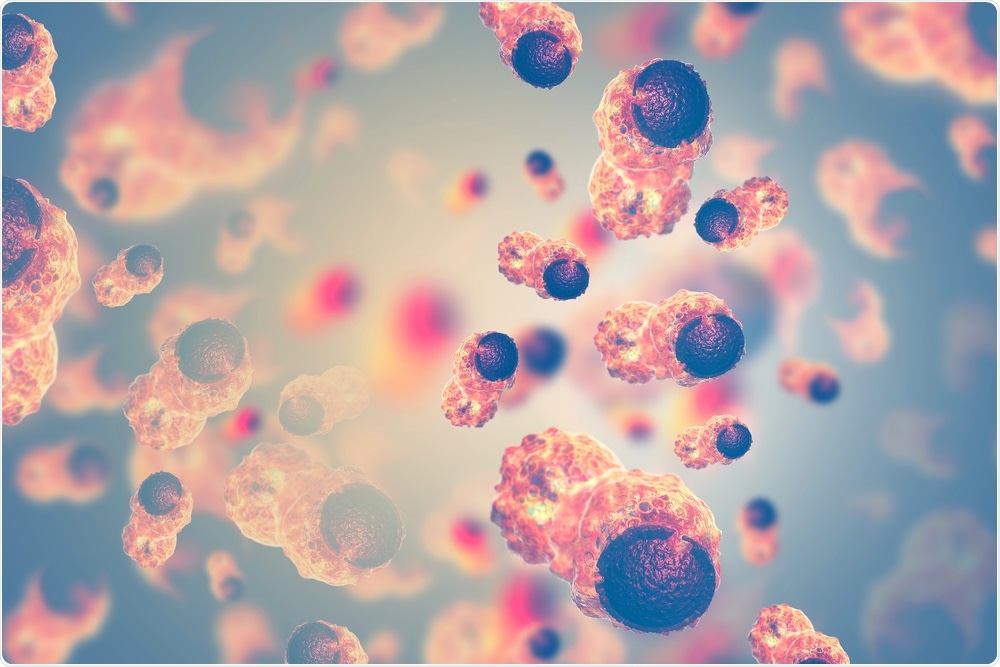Scientists have reported that observations of cells migrating through tiny channels have provided a deeper understanding of how cell migrate in 3D environments. This latest discovery also shows how cancer cells may enter tissues and spread across the body.

Image Credit: crystal light/Shutterstock.com
The study was reported in Biophysical Journal on October 6th, 2020.
Our results describe how cells can migrate and deform through confined spaces, providing potentially new ways to envision cell motility in small blood capillaries in vivo.”
Daniel Riveline, Study Senior Author, University of Strasbourg
Cell migration plays a crucial role in a wide range of biological phenomena, spanning from early development to disease processes. However, cell movement has largely been studied on flat surfaces and not in 3D environments, analogous to blood vessels and other structures generally found in the body.
To bridge this gap, Riveline and his colleagues analyzed cell motility in microfabricated channels that had either closed or open configurations (that is, restricted by four or three walls, respectively). Additionally, certain channels were straight, while others had different bottlenecks to imitate cell occlusion in small veins.
Predictably, fibroblasts traveled freely in straight channels; however, in the presence of bottlenecks, the nucleus at times inhibited the passage of cells, leading to pauses in cell motility. Other times, the cells were able to anchor and pull locally to deform the nucleus and enable the passage of cells.
Further results indicated that upon penetrating an adequately small capillary, the cells would not be able to alter their path of motion and that chemical gradients can cause directional motion.
The team also examined the movements of oral squamous epithelial cells, including a few with mutant keratin protein involved in squamous cancers. In the case of normal cells, keratin collected at the back of the nucleus during passage via the bottlenecks, perhaps to facilitate the deformation of the organelle.
On the other hand, the mutant cells were unable to pass through the bottlenecks, suggesting that flaws in keratin impair the movement in limited spaces, perhaps by preventing the deformation of the nucleus. The findings also indicate that squamous cancer cells could be inhibited within small capillaries, potentially enabling them to enter tissues.
Because initial arrest in the capillary is critical for tumor cells to metastasize to secondary sites in distant organs, blockage by mutant keratin may provide advantages for tumor seeding, survival, and proliferation.”
Daniel Riveline, Study Senior Author, University of Strasbourg
“Future studies could take this channel strategy to identify signaling networks that are modified in the context of cancer,” Riveline concluded.
Source:
Journal reference:
Le Maout, E., et al. (2020) Ratchetaxis in Channels: Entry Point and Local Asymmetry Set Cell Directions in Confinement. Biophysical Journal. doi.org/10.1016/j.bpj.2020.08.028.